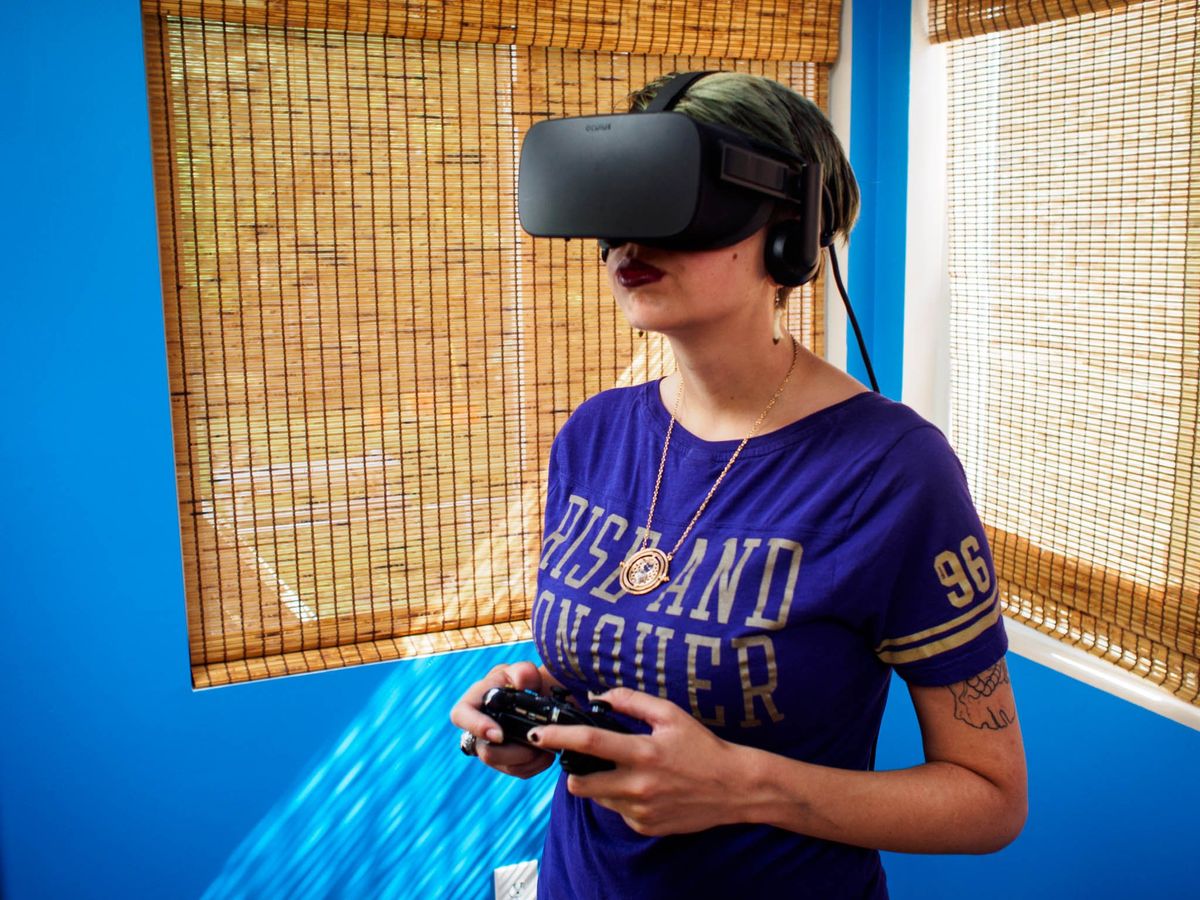When was the last time you sat down to a game and were truly amazed by what you saw as your fingers slid across a keyboard or slammed a joystick in one direction or another? It doesn't happen often for many, because the evolution of the games we play happens right in front of us. We see incremental changes in storytelling or graphics or mechanics every couple of weeks and don't often think much of it. The things that work carry us a little bit further into the games we love, and the things that don't are cast aside and immediately forgotten.
In many ways, Virtual Reality as it exists right now changes that perspective in an incredible way. Game developers aren't making small changes when releasing VR titles, they're making massive changes. It's the Wild West of figuring out what new ideas will grab an audience and hold their attention for longer periods of time. Every day in VR for the last four years has been an experiment, all largely due to Oculus and their Rift headset. Having used Oculus Rift every day for nearly three months now, it couldn't be more clear that PC gaming has been forever changed by the "guy in his garage" Kickstarter from 2012.
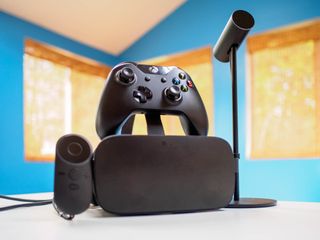
Hardware — One Size Fits Most
The biggest challenge associated with VR headsets today is how comfortably you can step in and out of an experience, and it's something Oculus spent a lot of time revising during their multiple developer revisions. The CV1 headset uses a unique combination of head straps, elastic rails, and a rigid read head triangle to fit as many heads as possible. The straps on the sides and top allow you to adjust for nearly every head size, the rear triangle works to displace the weight of the headset so it's not all leaning on your nose, and the stretchy rails are supposed to make it easy for anyone to slide in and out of Rift. It looks a whole lot more complicated than it is, which is great. When most people put try to put this headset on, it only takes a couple of seconds to figure it all out.
If you don't wear prescription glasses, Oculus Rift can be put on almost like a baseball cap. Line up the rear triangle with the peak on the back of your head, pull the headset over your forehead, and that's it. The rails flex out just enough to make everything feel snug against your face without squeezing, and the padding all around the outside of the lenses stops any skin irritation that would otherwise pop up. If you do wear glasses, there's a good chance this mounting process won't work for you. You'll need to put the headset on eyes first, and pull the back straps into place. This is a whole lot less comfortable, and frequently leads to pressing your glasses against your eyelids, which leads to smudges. I frequently need to remove Rift to clean my lenses and try putting the headset on again, but the good news is once the headset is actually seated against your face there's no further irritation.





Everything about Oculus Rift works because the camera in front of you. The Oculus Rift headset is emitting infrared light from dozens of sensors all around the headset, and the single camera that comes with the headset captures that light and uses it to determine how you are moving and where you are in relation to the camera. The camera is remarkably easy to set up and position, requiring almost no effort other than plugging it in and pointing the shiny part at your face. It's the kind of thing you can set and forget, knowing that every time you put the headset on it will be there to get the job done. Since the headset emits light from every direction, you can turn a full 180-degrees and the camera will have no problems picking up your movement. This combination of headset and camera is an elegant reminder of just how much work Oculus has put into polishing their ideas.
Everything about the Oculus Rift hardware has held up well over the last few months.
You aren't going to get far in a VR game without controllers, and Oculus offers up two option out of the box. The first is something everyone already knows and loves — and Xbox One controller. It really needs no introduction or explanation, you just connect the USB dongle and fire it up. The second controller is more of a quick remote control. It's a simple D-Pad and select button on a string, something you'd use if you were casually navigating something in VR. Everyone is going to use their Rift a little differently, but to be perfectly honest I've never found a use for this thing. It could be argued that the point is to wear this controller like it's on a strap and use it when you need it, but the Xbox controller is never far away and is always easy to locate on my desk.
Everything about the Oculus Rift hardware has held up well over the last few months. Even after showing off this headset to dozens of strangers that all required a personal strap adjustment, the velcro underneath shows no signs of wear. The same can not be said of the fabric around the outside of the headset, which is not removable and difficult to clean without damaging the hardware underneath. There are a couple of minor scratches on the front faceplate, which is to be expected after so much heavy use. I'm embarrassed to admit I've abused the single cable that runs from the side of the headset to my PC thanks to a couple of accidental roll-overs with my office chair, but the damage is entirely cosmetic. Considering the additional stress put on this particular headset, it's holding up quite well and seems likely will continue to do so for a long time.
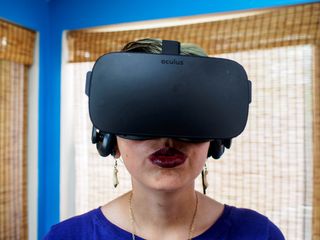
Software — No tutorial required
If you watch the original Kickstarter video for Oculus Rift, you get a great peek into the original vision for why Palmer Luckey felt Oculus Rift needed to exist. PC monitors and televisions offer a window into the world you are playing in, and there are rules game developers have to follow in order to have their experiences successfully exist within that frame. Oculus Rift was pitched to the world as a way to be fully immersed in that world, where the field of vision is completely occupied and you can simply look around instead of twitching on a mouse or gamepad to see the rest of the world. It's an attractive idea, being able to see someone coming at you from your periphery in a first-person shooter, or just being able to turn your head left and see out of the car window at the skyline during a race. Something that really let you live in that game for a little while.
There's a general expectation that VR headsets be complicated nerd toys, and Oculus works hard to be the exception.
If the original design for Oculus Rift was all about enhancing the existing state of video games by offering some additional immersion, it's safe to say that mission was accomplished several times over. That smile everyone gets when you can look around and experience the entire world around you is an incredible sensation, and in very much the same way Oculus had to adjust their hardware to suit better experiences it quickly became apparent that taking an existing game and porting it to VR was the least interesting thing you could do with a headset like this. Things like walking animations felt unnatural, heads-up displays looked out of place, and looking down at a body that isn't yours can be amazingly disorienting.
The Oculus experience does a lot to initially prepare you for what you're about to experience in a VR game. You're immersed in a virtual environment from the moment you put the headset on. The current setup is an elegant indoor setting with books and couches and a fireplace, but it's easy to dismiss how important this is. Users are experiencing spatial audio, full oculuar immersion, and are directly encouraged to navigate simple menus by pointing with their head. These are the fundamentals of playing in an Oculus Rift, and these concepts are introduced without needing a tutorial or boring explanation page in the manual. That quick burst of immersion is great, but ultimately it's up to the developers to get users the rest of the way.
Since it's launch, the software you use around CV1 hasn't changed dramatically. But the little changes that exist all over the interfaces have made a big difference in overall usability. You can purchase games and apps from the web now, for example, and the Oculus Store has improved dramatically when it comes to sorting and recommending titles. It's a series of slow, subtle changes that have made a huge difference over time, and that's a big deal. There's no need to re-learn anything, and nothing about this system is overly complicated. The same can be said for firmware updates, they arrive and are installed and there's very little for the user to do. This isn't nearly as easy to pull off as it seems, and it's something Oculus has been great at since the launch of the CV1. There's a general expectation that VR headsets be complicated nerd toys, and Oculus works hard to be the exception.
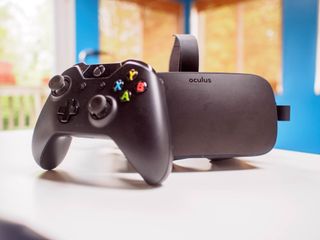
Experience — What do you mean you want me to just sit here?
Developers have had some time to work on a lot of new ideas for Rift users, and many of the results have been deeply rewarding for those who want to try something new. We've seen some incredible attempts to scare people, some amazing 360-degree video experiences that take you on a journey, and of course a ton of video games with some new and old concepts.
Eve: Valkyrie, which is included for free with your Oculus Rift for now, works hard to maintain user comfort by making you feel like you're sitting in the cockpit of a space fighter. It's an incredible experience that really takes advantage of your ability to look around you to see where your enemy is. It's easy to forget you're seated in an office chair at your desk or on your couch in your living room, right until you look down at your hands and see the character your playing isn't holding an Xbox controller. The body doesn't line up, and it awkwardly brings you back to reality.
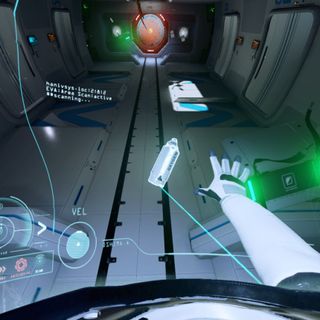
This theme repeats itself over and over in first-person VR experiences right now. Adr1ft is amazing, but seeing hands that aren't yours grasp your helmet to try and stop you from suffocating is disorienting. The Climb is beautiful and really gets your blood pumping as you try and scale massive rock walls, but it's never your hands reaching out and grabbing these surfaces. It's difficult to feel excited about a reach for an oxygen canister or a lean for a ledge that's just out of eyesight. This is something Oculus is addressing in the not-so-distant future with touch controllers, but not every experience should require the user to stand up and move around. In fact, many Rift games don't.
Edge of Nowhere is a great example, a game where you control your character from a third-party view. There's still a lot to be gained from immersion in a game like this, especially when it comes time to run like hell and not get eaten by massive bug monsters. The Lucky's Tale, a free platformer that comes with Oculus Rift, is another great example of this experience. There's plenty of room for great third-party experiences that don't force you to think of yourself as the main character in the adventure, and that's important.
The first few months of any new platform is all about trial and error, but in VR these are experiences that stick with the user. Positive or negative, first impressions in VR shape a lot of the conversation. A lot of that has to do with the challenge associated with appropriately explaining VR to someone before sticking them in the headset. Showing someone VR is incredibly powerful, and the further that headset removes the user from feeling like they're sitting on a couch or standing and holding a controller the more positive that experience will be. Oculus knows they're just as responsible for discovery as their game publishers, which is why there are now Oculus Rift demo stations popping up all over the US and UK. Creating that positive first experience is important, especially right now.
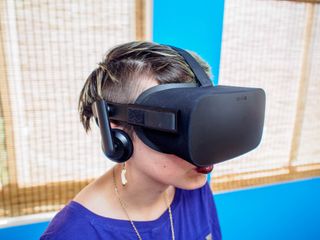
Three months later — is Oculus Rift worth it?
Oculus has done two incredibly important things right with the Rift so far: they delivered on the original promise and adapted when necessary. We've already seen how Oculus Touch will usher in a whole new world of interaction on Rift, and the headset itself is a remarkable demonstration of growth over a short period of time. As a first-generation consumer product, Oculus Rift is doing a great job elevating VR to a position outside of traditional gaming. It's a conversation that isn't going anywhere anytime soon.
That having been said, anyone looking to purchase an Oculus Rift that hasn't already decided this is the experience they want will quickly see the headset is flanked by a pair of unique challenges. If you want the absolute best VR experience possible, and you've already decided to build or buy a VR-capable PC, Oculus Rift as it exists today doesn't offer as many immersive experiences as an HTC Vive. If your argument for an Oculus Rift is that you're operating on a budget but still want to have fun in VR, the PlayStation VR is considerably less expensive and will also be more comfortable to use in a living room setting.
Arguing existing software or price for or against Oculus Rift misses the point a little, though. These are still very early days for all VR headsets. No one has "won" VR at this point, because the race hasn't technically started. Everyone's still lining up, and Oculus has the benefit of an earned reputation and a fanatical community of users from the Kickstarter days that all thoroughly enjoy the experiences offered so far.
That having been said, Oculus Rift is still something you should only be buying if you know VR is where you want to spend your time. It's a fantastic experience for anyone who wants something new from gaming, or for folks who love the idea of tinkering to get No Man's Sky to work for VR. It's great for people who really want that immersion, but it's still not a need for any of the major games that will be available this year. If you live for new things, Oculus Rift is absolutely where you want to be. If you're more interested in the best experience for the best games right now, it'll be a while before this is what you want.
Russell is a tech nerd who chases the best of everything, from phones to game consoles to laptops and everything glowing or beeping. He's the Managing Editor of gaming content for Mobile Nations and can be found contributing to all of the Mobile Nations sites. Reach out on Twitter!
